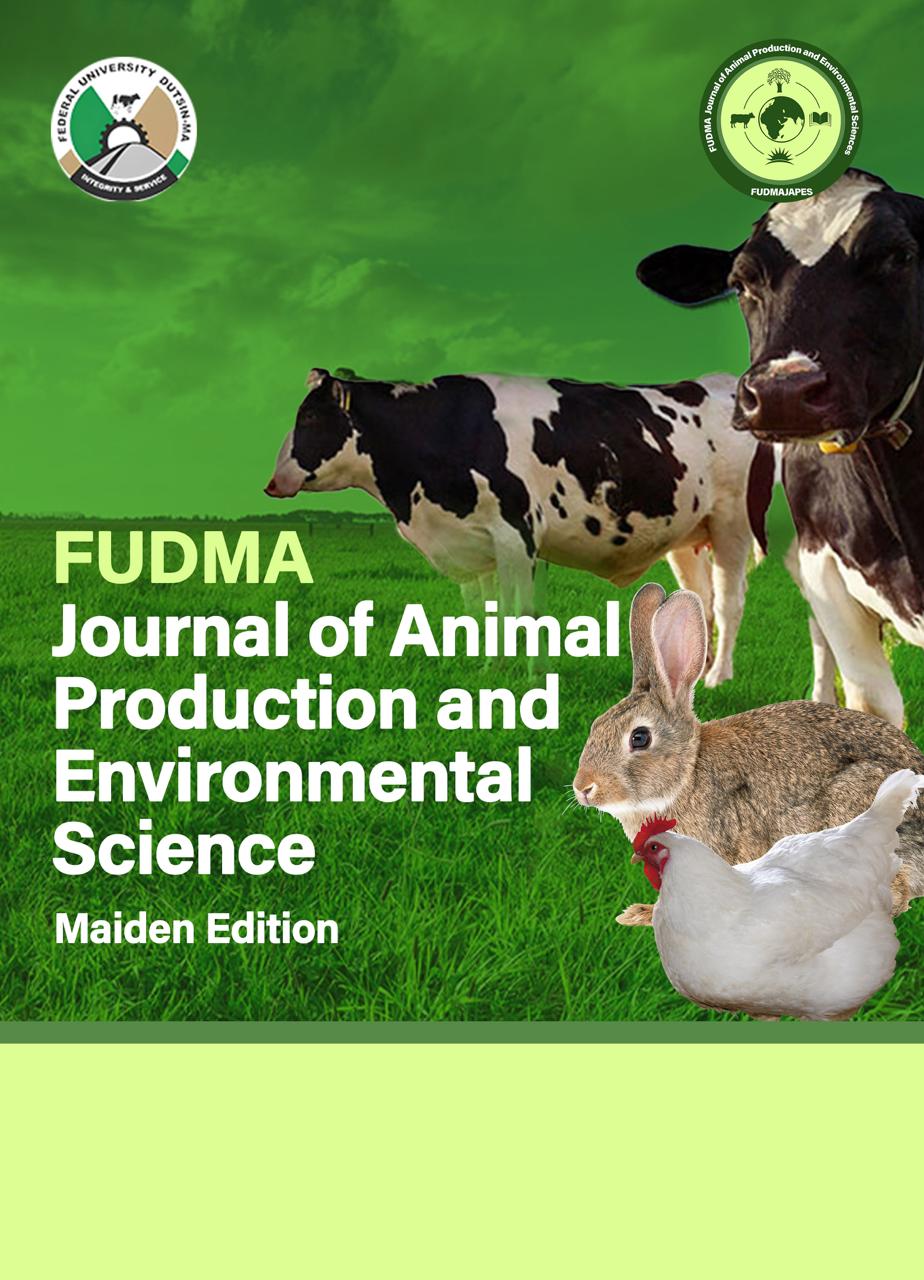GENETIC CHARACTERIZATION OF THE GROWTH HORMONE GENE IN CAMEL (Camelus dromedarius) POPULATIONS IN NIGERIA
DOI:
https://doi.org/10.33003/japes.2025.v1i1.22-27Keywords:
Camel, Growth hormone, Nigeria, Nucleotide, SequenceAbstract
This study characterized the growth hormone (GH) gene in Nigerian camel populations sampled from Zamfara and Katsina states, using molecular techniques. Blood samples were aseptically collected randomly selected camel population in Zamfara and Katsina States, Nigeria. Genomic DNA was extracted from the blood samples collected and Polymerase Chain Reaction (PCR), using primers KGH3-F and KGH3-R, was carried. A 687-bp fragment of the camel Growth Hormone (GH) gene extracted was evaluated via gel electrophoresis. Nucleotide sequence obtained from sequencing, were analyzd, using Bioinformatics comparison (NCBI), revealed 99.67% similarity between Nigerian Camelus dromedarius GH sequences and the reference sequence AJ575419 from Camelus dromedarius in the United Kingdom. BLAST alignment of the sequenced fragments against NCBI references revealed 99.67% similarity and 99% query coverage with the reference GH sequence from a UK-derived Camelus dromedarius (AJ575419). The alignment overlapped intron 4 and exon 5 of the gene, with two minor gaps observed at positions 6 and 15. These indels, representing only 0% of the sequence, may reflect either natural polymorphisms or minor sequencing artifacts. No single nucleotide polymorphisms (SNPs) were detected in the sampled population, suggesting low genetic variability and a common ancestry among Nigerian camels. The findings suggest high conservation of the GH gene across geographically distinct camel populations, highlighting its potential role in adaptation and productivity. The study establishes baseline genetic data for Nigerian camels, with implications for improving camel productivity and informing breeding programs in arid regions. It however, highlights the need for further studies with larger sample sizes to assess the relationship between GH gene variations and phenotypic traits such as growth rate and milk yield for targeted breeding programs in arid regions.






